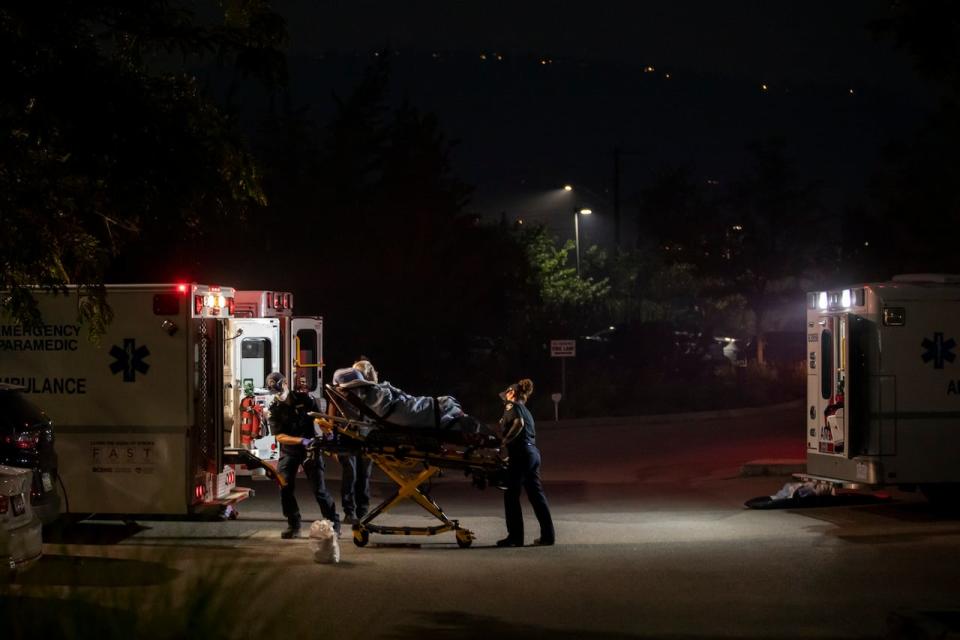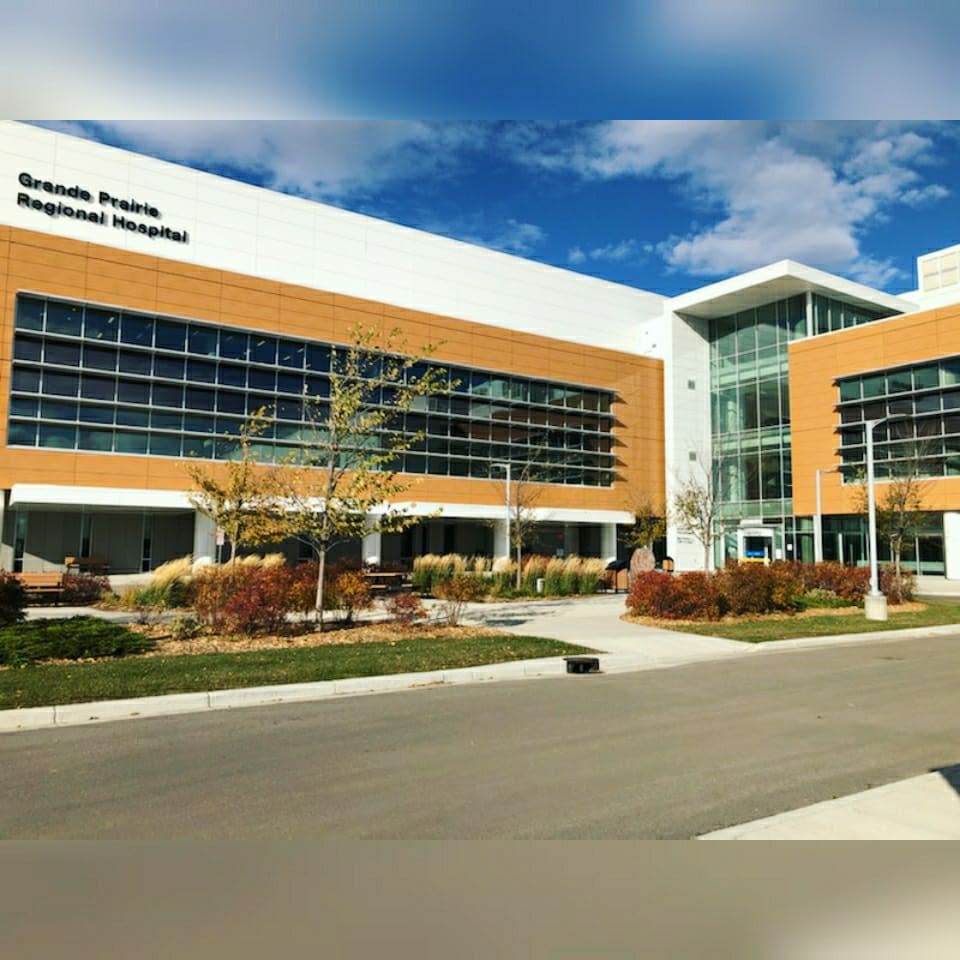Health-care evacuations are the 'new normal.' Here are lessons from Alberta's last wildfire season
The meals hadn't even been served at the 2023 Physicians Appreciation Dinner in Grande Prairie, Alta., when Candice Edey stepped forward to deliver the bad news.
"I had to go up to the microphone and, at this event that was supposed to be really appreciative of the folks in the room, and just let them know that we were going to basically be staging a mass casualty kind of incident response," said Edey, senior operating officer for the Grande Prairie area of Alberta Health Services (AHS).
Shortly after her announcement on May 6, Edey headed to the hospital to prepare for the arrival of 43 patients forced by wildfire to flee the town of High Prairie, about 150 kilometres away.
"In health care, there's lots of times when we just have to figure out things as we go," she told Dr. Brian Goldman, host of CBC Radio's White Coat, Black Art.
During last year's history-making wildfire season, the hospital became an ad hoc staging centre three times, helping about 100 relocated patients and continuing care residents from threatened communities. Officials and first responders say they've taken lessons away from 2023 about how to prepare for, and respond to, patient evacuations as they become the "new normal."
Cale Holmstrom's wildfire season last year began with an off-duty phone call. "Learned my lesson," he said. "Never look at your work phone when you're outside of work."

Holmstrom is a clinical operations manager with AHS, looking after EMS stations in the Slave Lake district, about 225 kilometres northwest of Edmonton. That phone call kicked off his efforts to move patients and long-term care residents around the huge (about two-thirds of the province) and sparsely populated north zone last year.
With a wildfire threatening the hospital in High Prairie, Holmstrom prepared even before there was any order to move patients to Grande Prairie, which is about a two-hour drive on a normal day.
"Anybody that's going to take more than a few minutes to get them up and get them out the door, we really wanted to pre-plan," said Holmstrom, who also has experience responding to the fires at Slave Lake in 2011 and Fort McMurray in 2016.
Doing a patient inventory
During last year's crisis, he and two other health-care officials sat down and took an inventory of every patient who would need to be moved: "Are they able to take a few steps to get up into an aircraft, if we need to fly them?" he said. "Can they step up into an ambulance? Do we really need to treat them as wheelchair or stretcher-bound-type patients?"
In the end, the decision was made not to use any aircraft because of the wildfire smoke.
Holmstrom said the convoy of school buses, ambulances and recreational buses that headed for Grande Prairie opted for a safer, but slower, route to keep the patients at ease — bypassing a more direct road because there were unpredictable nearby fires.
Many of those high-needs patients and long-term care residents were taken to the designated staging area, Grande Prairie Regional Hospital, and eventually to other destinations.
'Creativity and collaboration'
Edey's experience creating a staging area for patients at the hospital was brand-new.
She and other members of the hospital team began gathering what they needed at the hospital's auditorium, which is near the main entrance and can hold more than 100 people. Stretchers, vital signs machines, IV poles and workstations on wheels were all moved in. Workers put numbers on each bed to make triage simpler.
The patients eventually ended up dispersed throughout the hospital, including in the ambulatory care area and the day surgery area.
The staff's attitude was upbeat, Edey said.
"I would say almost excitement, right?" she said. "People were excited to be able to help. There was really great creativity and collaboration.... It wasn't perfect, but it was really a sense of: 'We can do this.'"
That attitude was needed in the all-hands-on-deck situation.
"You always think of the nursing staff and the doctors, which were really key people," she said. "But we had to have pharmacy there. We had to have porters come and help. We had to have patient registration. We had managers. It was everybody in the building came to assist."
Lessons learned
Edey and Holmstrom mentioned several lessons they took from 2023, especially because they expect to have similar crises year after year.
"Unfortunately it is definitely part of our new normal," Holmstrom said.
Edey said that in preparation for this year's fire season, the IT team created a live patient evacuation tracker, which updates for everybody using the system all at once so information doesn't fall through the cracks.

"So if they're staging Grande Prairie, we'd be able to log in and update information, EMS can access that information as well.... So it really creates a quite a bit more integrated, cohesive system for us to be able to track exactly how those patients are moving."
Holmstrom and Edey both talked about the importance of co-ordination throughout the community.
"Pre-plan with your municipalities, pre-plan with your allied agencies, your fire partners, your wildfire partners," Holmstrom said. As an example, he points to the relationships hospitals have with school divisions in his area.
"One phone call and we had probably half a dozen school buses be on standby for us in the parking lot," he said.
Holmstrom said keeping an even keel and taking a moment to talk to displaced patients is key.
"Nothing worse than having 100-and-some folks who are panicked and, 'Oh my goodness where are we going?' Definitely having a calm, cool, collected approach was advantageous for everybody involved."

Other takeaways were very specific but useful. Holmstrom said he learned it's important that certain dementia patients in close quarters get along with each other. Edey learned the importance of labelling, after some members of the health team were tasked with discovering which walkers or wheelchairs belonged to which people.
After that first evacuation last year, Edey said, the team was quick to make sure that problem didn't happen again, using spreadsheets and labels to track the equipment.
"That's one thing I'd say we do a good job of — is learning and trying to do better," she said.


